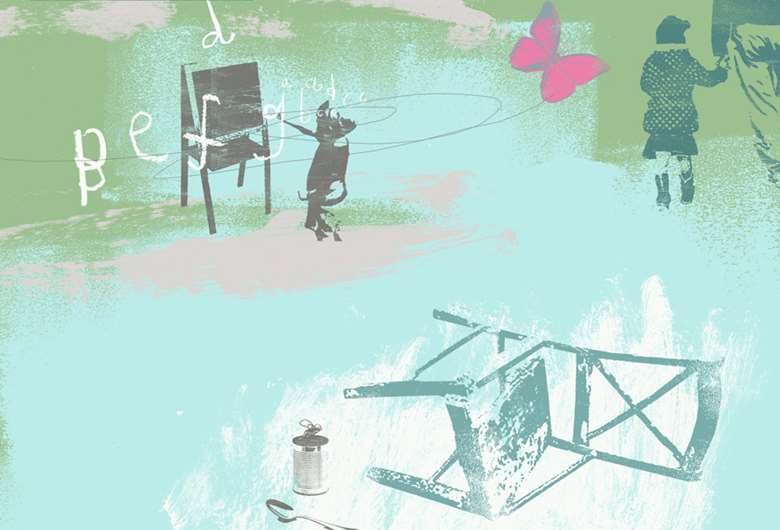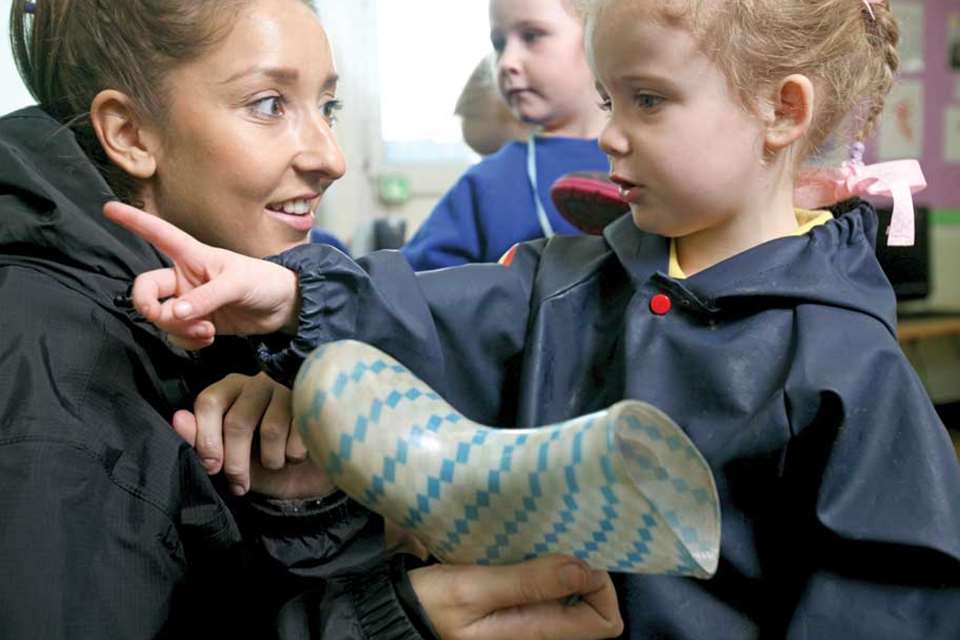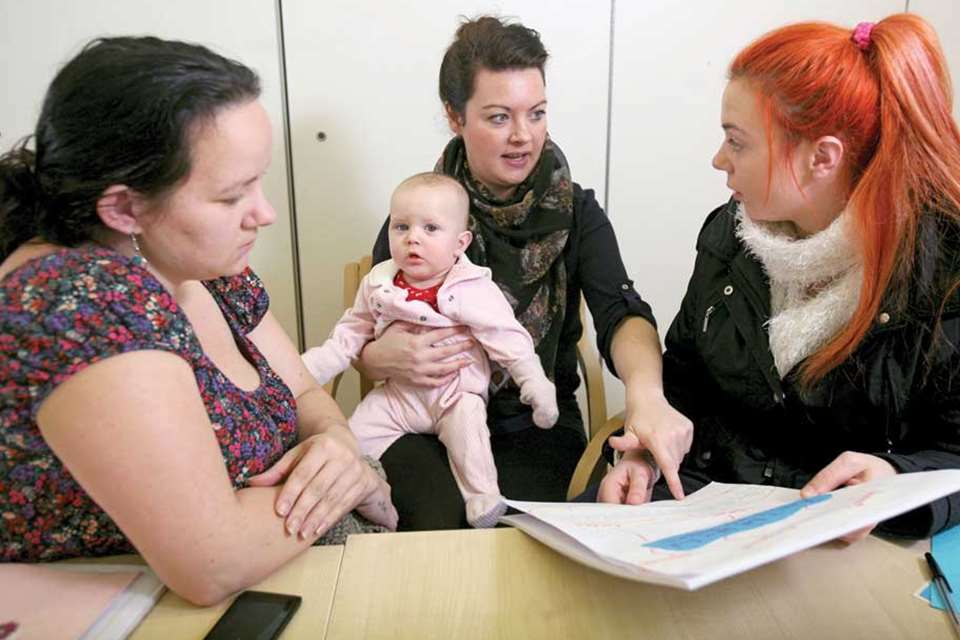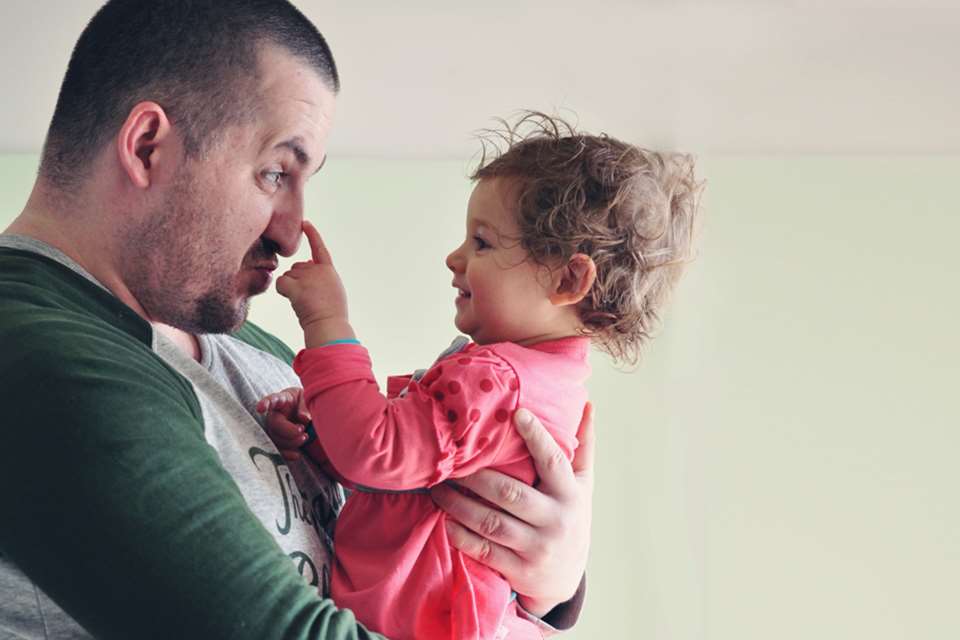A Unique Child: Inequality: Part 3 - Of house and home
Ruth Thomson
Monday, April 18, 2016
Inadequate housing and homelessness, which are on the rise, severely impact children’s well-being and development, writes Mary Dickins

The negative attainment gap between children who are materially disadvantaged and those who are not is well established. Although this is only one of a range of indicators of children’s overall well-being, it is an important one, because studies show that this early disadvantage often impacts life chances and qualifications when children are older. The causes of disadvantage are multiple, but inadequate housing and homelessness can be a major factor.
The findings of the Effective Provision of Pre-School Education (EPPE) research stressed that although the socio-economic status of parents was important, the quality of the home learning environment (HLE) was fundamental. Poor housing conditions have been linked to a number of negative outcomes for children including language delay, behavioural difficulties and mental and physical health issues. If families are displaced from their communities or do not have a stable, adequate and safe home setting, however well they try to parent, well-being and positive outcomes for their children will be infinitely more difficult to achieve (Harker 2006, Dickins 2014).
HOW BAD IS THE HOUSING CRISIS?
According to housing charity Shelter, nearly six million homes in England fail to meet the Government’s Decent Home Standard. They say that in England alone more than one million children live in overcrowded housing and that more than 70,000 homeless children are living in temporary accommodation. These figures are likely to be conservative estimates as many families in housing difficulty do not show up in the statistics.
The much-criticised spare room subsidy known as the ‘bedroom tax’ is just one example of how poorer families are regarded as having been unfairly disadvantaged by the system. Arguably, social housing itself is being eroded by current policy.
Proving controversial is the ‘pay to stay’ reform contained in the current housing bill in which an earning limit will be imposed on families in social housing, meaning ‘market’ rents for many who are currently paying a far lower social rent.
Other contentious issues are the end of permanent tenancies and the Right to Buy for housing association tenants, which looks set to further diminish social housing stock. Collectively, these measures could force many families to move away from their homes and communities.
For many commentators the current lack of truly affordable homes is an accelerating human disaster. It is argued that the policies of successive governments have resulted in exploitative landlords, overcrowding and poor-quality homes.
A majority of people in their 20s and 30s now regard it as an accepted fact that they will never have much by way of a home, resulting in what is now termed in the media as ‘Generation Rent’.
There has also been a substantial rise in evictions from rented properties and the number of families with rent arrears is growing rapidly. This situation means that many more children are likely to be growing up in substandard and insecure housing conditions in the future.
THE IMPACT OF HOUSING DIFFICULTIES
Most researchers define homelessness as the lack of a supportive, affordable, decent and secure place to live. International and UK research indicates that by the time homeless children reach school age, their homelessness affects their social, physical and academic lives in terms of physical health, development and academic performance. Studies reveal that many homeless children experience specific physical, psychological and emotional damage due to the circumstances that accompany episodes of homelessness.
A report published by the NSPCC in association with the Anna Freud centre (Hogg et al2015) points out that parents who are homeless are often themselves among the most vulnerable in society, and that the state of homelessness itself creates a potential physical and mental assault on parenting due to the stresses and deprivations inherent within it. This includes insecurity, loss of social support, stigma and isolation.
This report highlights the particular risk to babies because their development is reliant on the quality of the care that their parents are able to provide and, for some parents who are homeless, providing this care can itself be difficult. Although limited, research on the impact of homelessness on babies shows that they experience a significant decline in general developmental function between four and 30 months.
A RIGHT TO ADEQUATE HOUSING?
The importance of housing is recognised in the United Nations Convention on Economic, Social and Cultural Rights, which includes ‘the right of everyone to an adequate standard of living for himself and his family, including adequate housing’. The UK is legally bound by this treaty. The Children’s Rights Alliance (CRA) argues that children’s human rights to adequate housing are clearly not being met.
It points out that more and more children are being affected by homelessness; that 65 per cent of homeless households in England are families with children and that they are increasingly housed in unsuitable bed and breakfast and private accommodation. The CRA highlights a 400 per cent increase of families with children living in bed and breakfast accommodation in comparable periods between 2009 and 2014.
In September 2014, there were 500 families in England with children in bed and breakfast accommodation who had been there for more than the statutory six weeks. Even when housed, families are often only accommodated in fixed-term tenancies of 12 months, which can lead to anxiety around future eviction and the potential for a repeated cycle of homelessness.
Despite the UK commitment to the UN Convention on the Rights of the Child, far too many young children are growing up in housing that is insecure, overcrowded and of a poor standard. The challenge for the early years sector is to find ways of supporting and empowering families, thus mitigating some of the potentially negative effects and consequences.
CASE STUDY
Malika has a son who is nearly four and a daughter who is nine months old. She and her partner live in a former studio flat which has been converted into a one-bedroomed flat. The nature of the conversion means that there is no adequate space in any of the rooms, with just enough space for a queen-size bed and a travel cot in the bedroom and a narrow strip of living room/kitchen.
The son sleeps in a converted utility cupboard in the hallway. There is no space for the baby to crawl around safely or for the little boy to play, especially when the adults are cooking or performing other household tasks. Malika says that day-to-day family life is very stressful.
They are forced to store many of their possessions, including clothes, outside on the narrow balcony. The flat has condensation and mould in the bathroom and Malika complains of overheating and ant infestations.
Malika feels that the cramped conditions and unhealthy environment are adversely affecting her children’s development and learning. She says that they are prone to respiratory infections and skin complaints and that the whole family sleeps badly. She says she dreams of her children having adequate space to play freely.
When asked about family support, Malika explains that she does not find the school nursery that her son attends very supportive but praises the local Home-Start service. She says the volunteer who visits her is like a friend she can call on when she is depressed and who has enhanced her experience as a parent. She points out that her home was only meant for one person and not a growing family of four. Despite this, they have been told they have very little hope of being rehoused in the foreseeable future even though they have offered to move out of the local area.
MORE INFORMATION
Children’s Rights Alliance for England, www.crae.org.uk/publications-resources/childrens-human-rights-and-housing
Dickins, M (2014)The A-Z of Inclusion in Early Childhood, Open University Press
Harker, L (2006)Chance of a Lifetime: The impact of bad housing on children’s lives, Shelter
Hogg, Set al(2015)An Unstable Start: All Babies Count – Spotlight On Homelessness, NSPCC/Anna Freud Centre
Home-Start UK, www.home-start.org.uk
POINTS FOR REFLECTION
Are you aware of families in your setting that are experiencing housing difficulty?
What expectations have you got of parents and ‘home learning’ and are they realistic?
What resources do you provide to support families and children in housing difficulty?
What advice can you give to parents on this issue?
Mary Dickins is an early years consultant and author specialising in inclusion. This series will go on to examine the social, educational, and physical and psychological effects of poverty.










